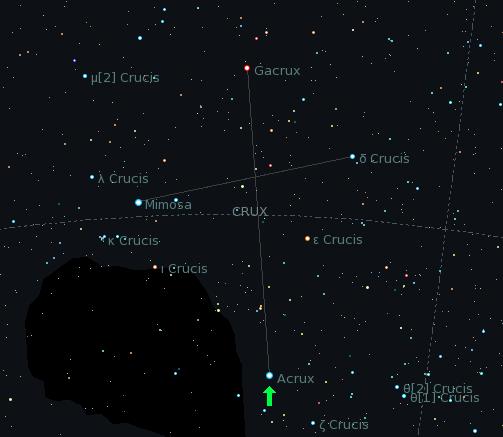The Southern Cross asterism forms a cross shape and is composed of five stars. The two brightest stars in the asterism are Acrux and Gacrux, which point the way to the Southern Celestial Pole. Often, the asterism is confused for the constellation of Crux as a whole, but the Southern Cross is composed merely out of the brightest stars in Crux.
The five stars that form the Southern Cross are represented on the flags of Australia, New Zealand, Papua New Guinea, Samoa and Brazil. The Southern Cross is also included in the national anthems of Australia and Brazil.
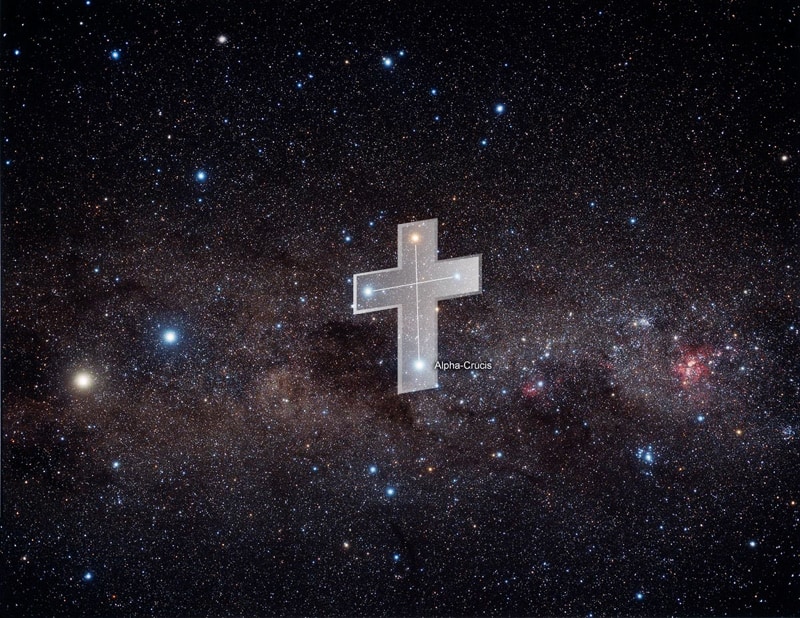
History and Mythology of the Southern Cross Asterism
The Southern Cross is significant in many southern countries and civilizations. Crux means cross in Latin and ancient Greeks considered Crux to be part of the Centaurus constellation. The first documented example of discovery of the Southern Cross was found in Ancient Greece around 1000 BC.
The Southern Cross was also discovered by Europeans in the Age of Discovery, in the period from the early 15th century to the early 17th century. Portuguese sailors mapped Crux for navigation while sailing near the southern tip of Africa, and Amerigo Vespucci is believed to be the first European to see the “four stars” as he called them, during his third voyage in 1501.
Then, during the 17th century, Crux was finally separated from the Centaurus constellation and made a constellation in its own right.
The Southern Cross was very important to the Egyptians and the Aborigines. The Egyptians saw it as representative of the place where Horus, the Sun goddess, was crucified, marking the passage of winter. The Aborigines and the Maori saw the cross as symbolizing animist spirits that were integral in their ancestral beliefs.
While the Southern Cross is visible in Australia and New Zealand all year round, it was last visible in the northern hemisphere about 5,000 years ago, including most of North America, as well as Babylonia and Greece.
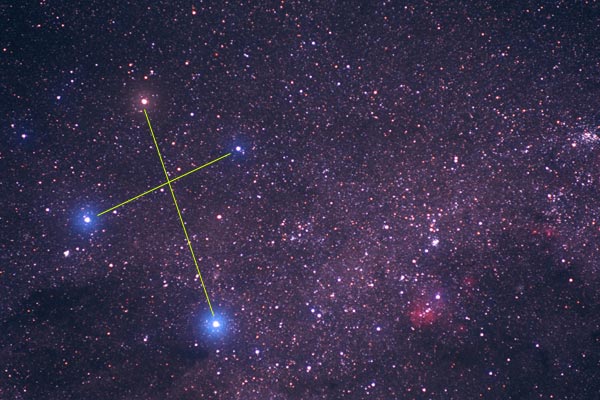
Location of the Southern Cross Asterism
The Southern Cross is located in the constellation of Crux, which is the smallest out of the 88 modern constellations. The asterism spreads out for around 68 square degrees in the sky. It is visible between +20° and -90° and it is circumpolar south of 34°S, this means that it never sets below the horizon. On the celestial sphere, Crux is exactly opposite the constellation Cassiopeia.
Its right ascension is 12.6 hours and its declination is -60°. It is best viewed at 9pm during the month of May.
Crux is located in the third quadrant of the southern hemisphere (SQ3). The neighboring constellations around Crux are Centaurus and Musca. Crux belongs to the Hercules family of constellations, along with Aquila, Ara, Centaurus, Corona Australis, Corvus, Crater, Cygnus, Hercules, Hydra, Lupus, Lyra, Ophiuchus, Sagitta, Scutum, Sextans, Serpens, Triangulum Australe and Vulpecula.
The Southern Cross should not be confused with the so-called False Cross, formed by four other bright stars in the vicinity. The X-shaped False Cross does show a slight resemblance to the Southern Cross and is oriented in approximately the same way, but the four stars – two belonging to the constellation Vela and two to Carina — are located a bit further north, and they do not point to the Southern Celestial Pole.
Notable Stars
The Southern Cross asterism stars — Acrux, Mimosa, Gacrux, Imai and Ginan — are the brightest stars in the Crux constellation.
Acrux
Acrux, also known as Alpha Crucis, is the brightest star in the constellation of Crux, and the 13th brightest star in the night sky. However, it can also be the 12th brightest star in the night sky, due to its variability in brightness.
Acrux is a multiple star system. The primary star is a blue-white subgiant star located at around 321 light-years away from the Sun, and the secondary star is a blue dwarf star.
The primary star, Acrux A, is around 25,000 times brighter than our Sun and has 1780% of our Sun’s mass. The secondary star, Acrux B, is 16,000 times brighter than our Sun and has 552% of our Sun’s mass.
Acrux A is also bigger than our Sun, having 780% of our Sun’s radius. Acrux B has 540% of our Sun’s radius. Both stars are hotter than the Sun, too, with Acrux A having a surface temperature of 24,000 K and Acrux B having a surface temperature of 28,000 K.
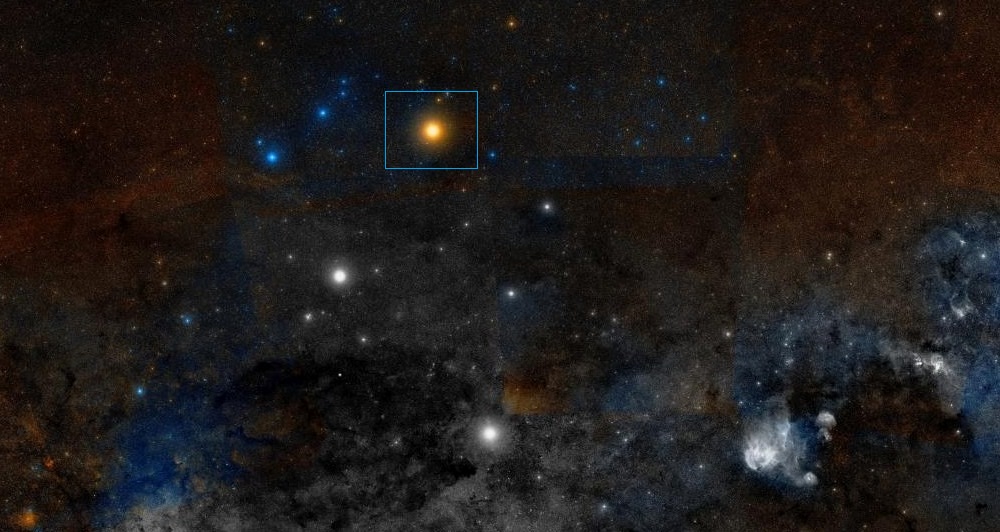
Gacrux
Gacrux, also known as Gamma Crucis, is the third brightest star in the constellation of Crux, and the 25th brightest star in the night sky. is located around 88.6 light-years away from the Sun, yet is the nearest M-class giant star to it.
The Gacrux star is around 820 times brighter than our Sun, and has 150% of its mass and 840% of its radius. It has an apparent magnitude of +1.64. It is also the nearest red giant to the solar system.
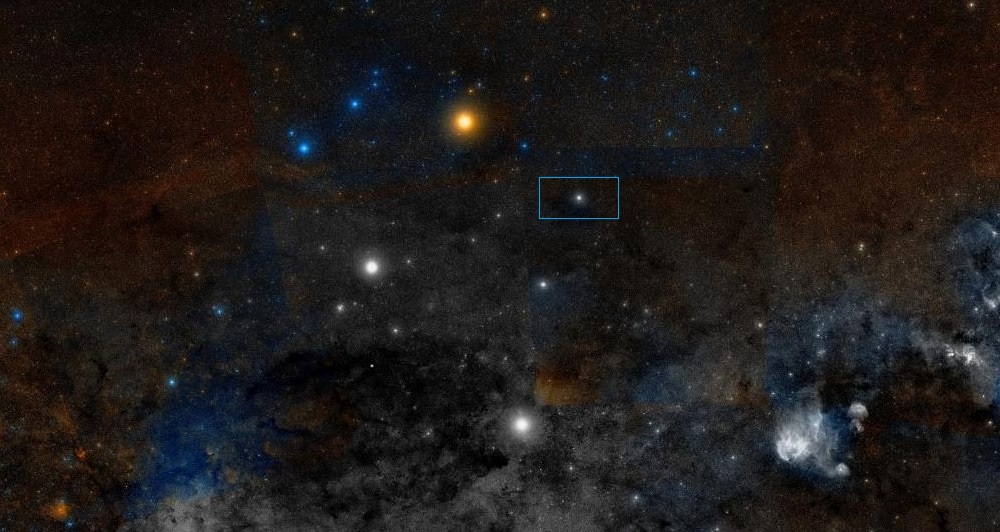
Imai
Imai is the fourth brightest star in the constellation of Crux. Designated as Delta Crucis, it is a blue-white subgiant star with an apparent magnitude of 2.79.
Imai is around 10,000 times brighter than our Sun, and has 890% of its mass and 800% of its radius. It has a temperature of around 22,570 K. It is also a fast-spinning star with a rotational velocity of around 210 km/130.4 miles per second.
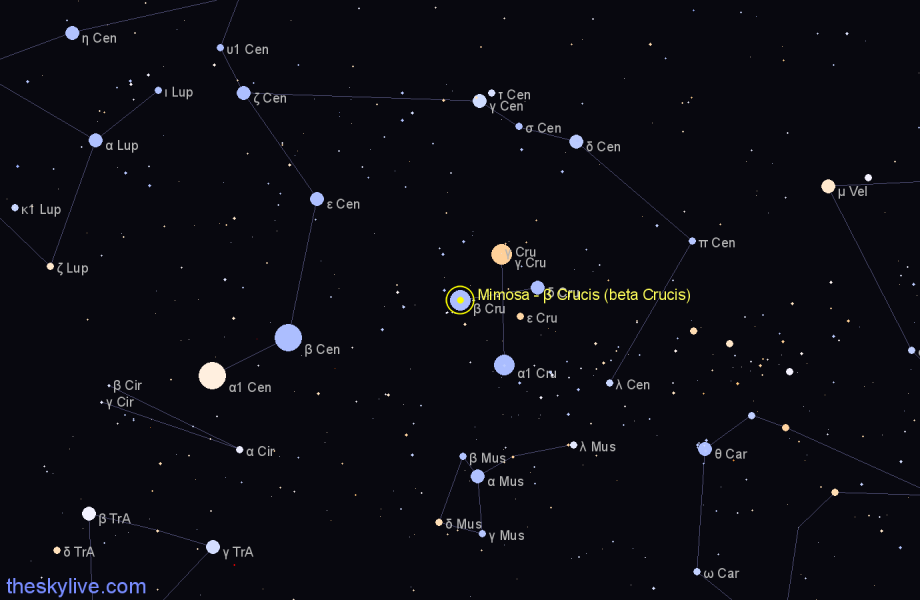
Mimosa
Designated Beta Crucis, Mimosa is the second brightest star in the constellation of Crux and the 20th brightest star in the night sky. It has an apparent magnitude of 1.25 and is located around 280 light-years away from Earth.
Mimosa is around 34,000 times brighter than our Sun. It has 1600% of its mass and 840% of its radius. It is also quite a young star in comparison to others, having an estimated age between 8 to 11 million years.
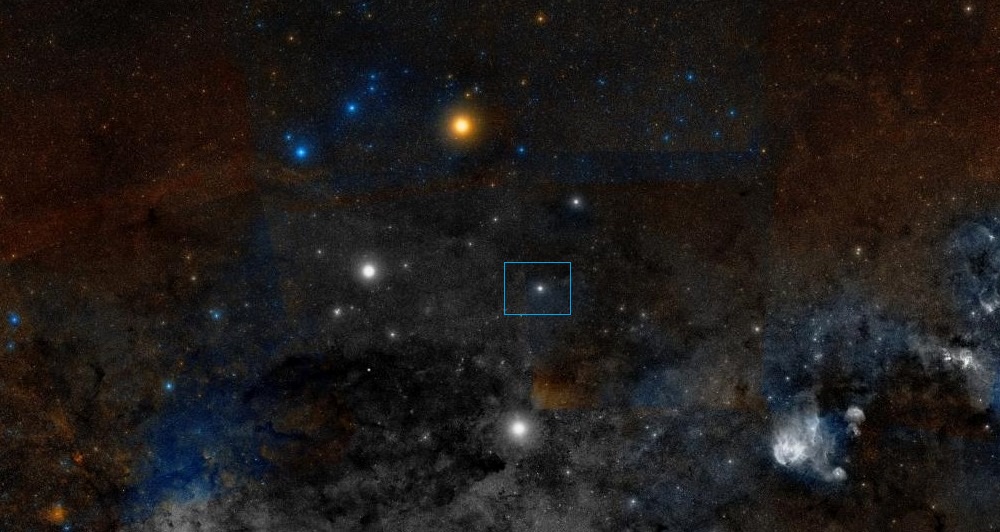
Ginan
Ginan, also known as Epsilon Crucis, is located around 230 light-years away from Earth. It is the fifth brightest star in the constellation of Crux and has an apparent magnitude of 3.58. Ginan is an orange-hued star that is 302 times brighter than our Sun.
It has 152% of the Sun’s mass and around 2841% of its radius. It is evolving away from the main sequence and thus it will continuously expand.
Guide To Other Stars
Just like the pointer stars in Ursa Major can be used to help find the way to the North Star, the Southern Cross asterism can be used to help find the location of the Southern Celestial Pole. The longer bar of the cross-shaped star pattern points almost exactly to the South Pole in the sky. Aviators and sailors sometimes refer to this point as the “south polar pit” because there are no bright stars marking it.
The Southern Celestial Pole can also be located by drawing an imaginary line between the stars Alpha and Beta Centauri in Centaurus constellation, and finding the point where this line intersects with the one from Alpha to Gamma Crucis.
Extra Facts
- A depiction of the Southern Cross was discovered on a stone engraving in Macchu Picchu.
- The Incas knew the Southern Cross as “Chakana”, meaning “stair”, and it played an important part in Incan mysticism, symbolizing the three tiers of the world: the heavens, the world of the living and the underworld.
- The Aborigines saw Crux and the Coalsack Nebula as marking the head of the “Emu in the Sky”.
- The constellation of Crux is circumpolar and can be seen throughout the year in Australia and New Zealand.
Images:
- Some Images created with the NightVision app – https://www.nvastro.com/nvj.html
- Some Images created with the Stelvision Sky Map https://www.stelvision.com/en/sky-map/
- Southern Cross 1 – https://earthsky.org/brightest-stars/acrux-shines-in-the-southern-cross
- Southern Cross 2 – https://nineplanets.org/the-southern-cross/
- Acrux – https://www.constellation-guide.com/the-southern-cross/
- Gacrux – https://www.star-facts.com/gacrux/
- Imai – https://www.star-facts.com/imai/
- Mimosa – https://theskylive.com/sky/stars/mimosa-beta-crucis-star
- Ginan – https://www.star-facts.com/ginan/
